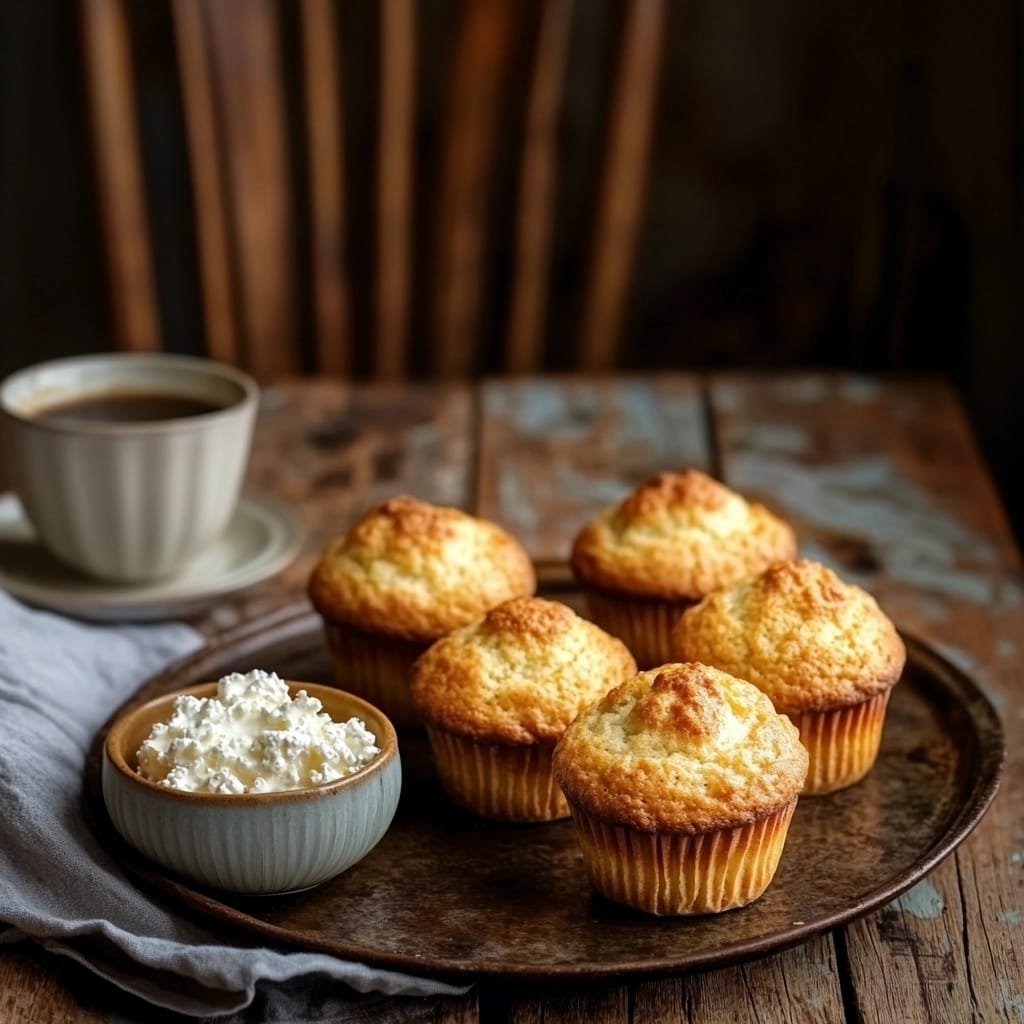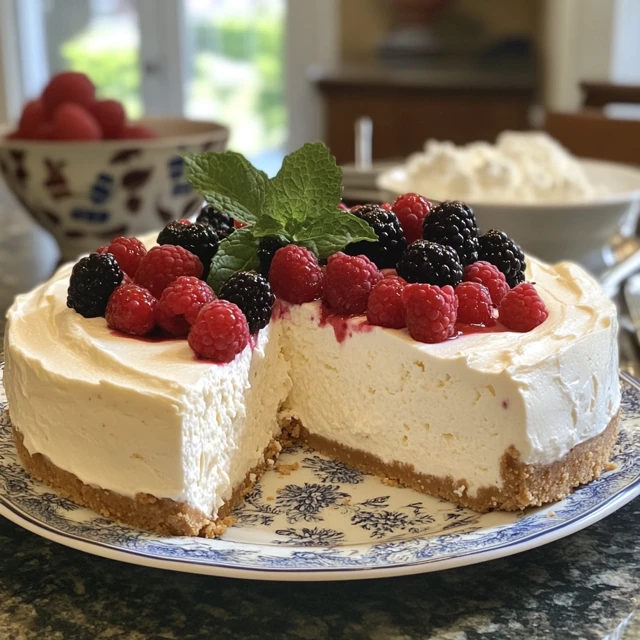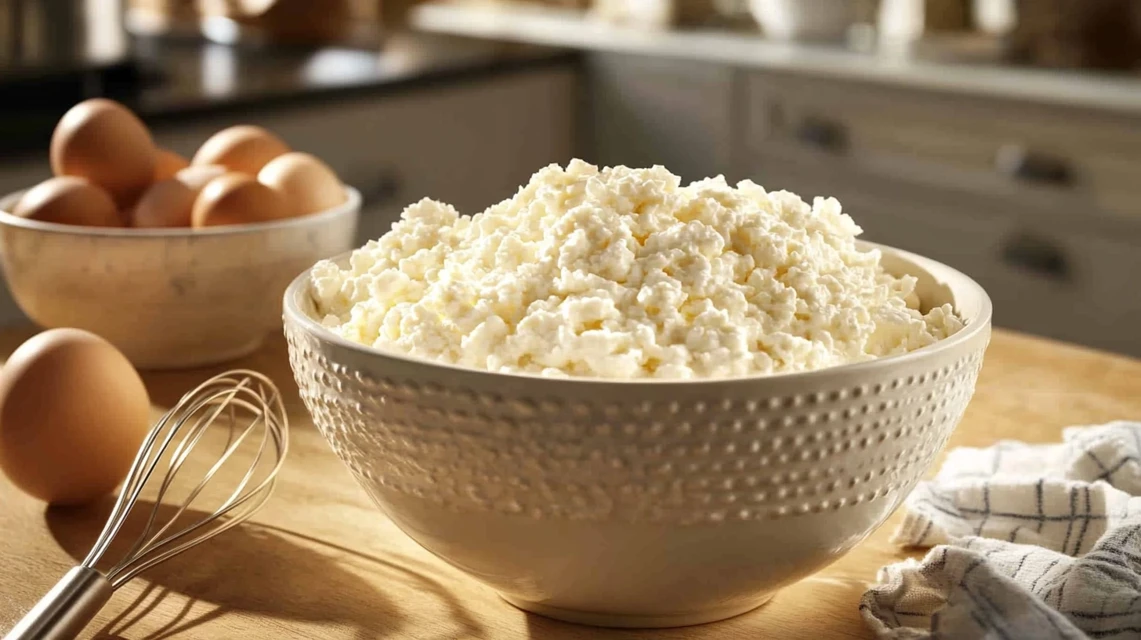Cottage cheese is often associated with healthy eating and savory dishes, but it also plays a significant role in baking. Its unique properties can transform baked goods by improving texture, flavor, and nutritional value. This article explores what does cottage cheese do in baking and why it’s a versatile and beneficial ingredient for various recipes.
Introduction to Cottage Cheese in Baking
Cottage cheese is a fresh cheese made from cow’s milk. It has a light taste and is creamy with small lumps. You can use it in both sweet and salty foods. When you bake with it, cottage cheese makes food moist, rich, and adds protein, so people who want healthy baked goods like to use it.
The Unique Properties of Cottage Cheese
Cottage cheese stands out in baking due to its unique composition:
- High Moisture Content: Cottage cheese contains a significant amount of water, which helps keep baked goods moist and tender.
- Protein-Rich: Packed with casein and whey proteins, cottage cheese provides structural support to baked items while enhancing their nutritional value.
- Mild Flavor: Its neutral taste allows it to blend seamlessly into a variety of recipes, whether sweet or savory.
- Creamy Texture: When blended or mixed, cottage cheese creates a smooth consistency, ideal for creamy fillings or batters.
These properties make cottage cheese a versatile addition to baked goods, offering benefits beyond basic flavor enhancement.
Why Cottage Cheese is a Healthy Baking Alternative
For those seeking healthier baking options, cottage cheese serves as an excellent alternative to traditional ingredients:
- Low in Fat: Cottage cheese can replace higher-fat ingredients like cream cheese or butter, reducing the overall calorie content of baked goods.
- High in Protein: Compared to other dairy products, cottage cheese delivers more protein, making baked treats more filling and nutritious.
- Low in Carbohydrates: Cottage cheese is a low-carb option, making it suitable for keto or low-carb diets.
- Nutrient-Dense: It contains calcium, phosphorus, and essential vitamins like B12, which contribute to overall health.
Incorporating cottage cheese into your recipes allows you to enjoy delicious baked goods without compromising on health.
How Cottage Cheese Enhances Baked Goods
Cottage cheese has multiple roles in baking, from improving texture to adding moisture and protein. Let’s explore how it works its magic in different types of baked goods.
check out this step-by-step guide on making Cottage Cheese Flatbread.
Adds Moisture to Recipes
One of the primary benefits of using cottage cheese in baking is its ability to retain moisture. This quality is particularly valuable in recipes that tend to dry out, such as cakes, muffins, and bread. Cottage-cheese ensures that baked goods stay soft and tender, even after cooling.
Cottage Cheese in Cakes and Muffins

Cottage cheese is an excellent ingredient for enhancing the texture and moisture of cakes and muffins. When blended, it integrates seamlessly into batters, creating a creamy consistency that yields soft, fluffy results. Here’s how it works in these recipes:
- Cakes: Cottage cheese adds richness and a slight tang that complements flavors like chocolate, lemon, and vanilla. It’s especially effective in dense cakes like pound cake or bundt cake, where moisture is key.
- Muffins: In muffins, cottage cheese not only keeps them moist but also adds protein, making them a more filling snack or breakfast option. Blueberry, banana, and zucchini muffins all benefit from the inclusion of cottage cheese.
To use cottage cheese in cakes or muffins, blend it into a smooth consistency before adding it to the batter. This ensures even distribution and prevents lumps.
Using Cottage Cheese in Bread Dough
Cottage cheese is also a fantastic addition to bread dough, where it enhances both flavor and texture. Its high moisture content softens the dough, resulting in bread that’s tender and slightly chewy. Additionally, its protein content strengthens the dough structure, allowing it to rise beautifully.
Here are some ways cottage cheese improves bread recipes:
- Soft Dinner Rolls: Adding cottage cheese to the dough makes rolls pillowy and rich without needing excessive butter or oil.
- Savory Loaves: In herb or cheese bread, cottage cheese adds a subtle tang and boosts the protein content.
- Quick Breads: For non-yeasted bread like cornbread or soda bread, cottage cheese ensures the final product is moist and flavorful.
To incorporate cottage cheese into bread dough, mix it into the wet ingredients or knead it directly into the dough. Blending is optional and depends on whether you prefer a smooth or slightly textured final product.
check out this step-by-step guide on making Cottage Cheese Flatbread.
Boosts Protein Content
Cottage cheese is a protein powerhouse, making it an ideal ingredient for baked goods that require a nutritional boost. Its high protein content not only enhances the health benefits of your recipes but also contributes to their structure and texture.
Protein-Packed Pancakes
Cottage cheese is a fantastic addition to pancakes, providing a protein-rich twist on the breakfast classic. When blended into the batter, it adds creaminess and fluffiness, creating pancakes that are light yet filling. Here’s how it works:
- Texture: Cottage cheese makes the batter smooth, resulting in tender pancakes with a slight tang.
- Protein Boost: Each serving of pancakes becomes more satisfying, thanks to the additional protein from the cottage cheese.
To make protein-packed pancakes with cottage cheese, combine it with eggs, flour, and a pinch of baking powder. Add sweet or savory toppings like fresh fruits, nuts, or even a drizzle of honey for extra flavor.
Cottage Cheese in Savory Pastries
For savory pastries, cottage cheese acts as a creamy filling that’s rich in protein and flavor. Its mild tang complements herbs, vegetables, and meats, making it a versatile choice for:
- Stuffed Croissants: Blend cottage cheese with fresh herbs and use it as a filling for flaky croissants.
- Savory Danishes: Combine cottage cheese with spinach or mushrooms for a protein-packed Danish filling.
- Empanadas: Add cottage cheese to spiced meat or vegetable fillings for extra creaminess and nutritional value.
Cottage cheese makes these baked treats taste better and be healthier, so they fill you up and are good for you.
Creates a Creamy Texture

Cottage cheese is creamy, which makes it great for baking. You can blend it until smooth or leave the small lumps – either way, it makes baked foods feel nice when you eat them.
Cheesecakes and Custards
Cottage cheese is a wonderful substitute or complement to cream cheese in cheesecakes and custards. It creates a creamy texture with a lighter feel, making desserts less heavy but equally delicious.
- Cheesecakes: Use cottage cheese in place of or alongside cream cheese to create a velvety filling. Blend the cottage cheese until smooth for a seamless texture. The result is a cheesecake that’s rich in flavor but lower in fat.
- Custards: In custards, cottage cheese adds body and a mild tang, enhancing both flavor and consistency. It works well in baked custards or flan.
Cottage cheese in these recipes provides a balance of creaminess and nutrition, making desserts indulgent yet wholesome.
Cottage Cheese in Quiches and Pies
In savory dishes like quiches and pies, cottage cheese adds a creamy layer that enhances the overall texture and flavor. Its subtle tang pairs beautifully with eggs, vegetables, and meats, making it an excellent addition to:
- Quiches: Cottage cheese blends seamlessly into egg mixtures, creating a rich, fluffy filling. It pairs well with spinach, mushrooms, or smoked salmon.
- Savory Pies: Use cottage cheese as a base for savory pies, such as chicken pot pie or vegetable tarts. It adds creaminess while lightening the overall texture.
For the best results, blend the cottage cheese until smooth before incorporating it into these dishes. This ensures an even, creamy texture throughout the filling.
Tips for Baking with Cottage Cheese
To maximize the benefits of cottage cheese in your baked goods, it’s essential to choose the right type and understand how to substitute it effectively.
Choosing the Right Cottage Cheese for Your Recipe
Not all cottage cheese is the same, and selecting the right one can impact the outcome of your recipe. Consider the following factors:
- Fat Content: Full-fat cottage cheese provides the creamiest texture and richest flavor, while low-fat or fat-free options work well for lighter recipes.
- Curd Size: Large-curd cottage cheese offers a chunkier texture, suitable for rustic dishes. Small-curd cottage cheese blends more easily, making it ideal for smooth batters or fillings.
- Blended or Chunky: For recipes requiring a creamy consistency, blend the cottage cheese before use. For dishes that can accommodate texture, leave it as is.
By tailoring your choice to the recipe, you can achieve the desired texture and flavor with ease.
Substituting Cottage Cheese in Baking
Cottage cheese can serve as a substitute for various ingredients in baking, offering a healthier alternative without sacrificing flavor or texture:
- Cream Cheese: Replace cream cheese with blended cottage cheese in cheesecakes or frostings for a lighter version.
- Ricotta Cheese: Use cottage cheese in place of ricotta in lasagna, stuffed shells, or desserts. Blend it for a smoother texture that mimics ricotta.
- Butter or Oil: Substitute part of the butter or oil in quick breads and muffins with cottage cheese to reduce fat content and add moisture.
When substituting, use an equal volume of cottage cheese and adjust other liquid ingredients if needed. This ensures the recipe maintains its intended consistency.
Frequently Asked Questions
Why do you use cottage cheese in baking?
Cottage cheese is used in baking because of its unique ability to enhance both the flavor and texture of baked goods. Its high moisture content helps keep recipes like cakes, muffins, and breads tender and soft, while its protein-rich composition adds structural support. Additionally, cottage cheese acts as a healthier alternative to higher-fat ingredients like cream cheese or heavy cream.
Here’s why bakers love using cottage cheese:
- Moisture: Cottage cheese prevents baked goods from drying out, ensuring a soft and tender crumb.
- Flavor: It adds a mild tanginess that balances sweetness in desserts or complements savory ingredients in quiches and pastries.
- Nutrition: Cottage cheese is low in fat and rich in protein, making it ideal for creating wholesome treats without sacrificing flavor or quality.
In both sweet and savory recipes, cottage cheese is a versatile and beneficial ingredient.
Does cottage cheese melt when baked?
Cottage cheese doesn’t melt like traditional cheeses such as mozzarella or cheddar, but it softens and blends into recipes when baked. Depending on the curd size and preparation, it can either retain a slightly lumpy texture or become creamy and smooth.
- Blended Cottage Cheese: If blended before use, cottage cheese creates a velvety consistency in dishes like cheesecakes, quiches, and custards.
- Chunky Cottage Cheese: Left unblended, cottage cheese softens and integrates into the dish without fully melting, adding texture to recipes like lasagnas or stuffed pastries.
This flexibility allows bakers to achieve the desired texture in their recipes. For a smooth result, blending is recommended, while chunkier textures work well in rustic or hearty dishes.
check out this step-by-step guide on making Cottage Cheese Flatbread.
Can cottage cheese replace butter in baking?
Yes, cottage cheese can replace butter in some baking recipes, especially in cakes, muffins, and quick breads. It provides moisture and richness, making it a healthier alternative that reduces fat content while maintaining flavor and texture.
- Substitution Ratio: Use the same volume of cottage cheese as the butter called for in the recipe. For example, if a recipe requires 1 cup of butter, you can substitute it with 1 cup of cottage cheese.
- Adjustment Tip: Blend the cottage cheese until smooth to ensure an even distribution in the batter, especially in recipes requiring a creamy consistency.
Cottage cheese is particularly effective in recipes where butter’s fat isn’t crucial for structure, such as moist cakes or quick breads. However, it may not be ideal for recipes like flaky pastries where butter’s solid fat content is essential for texture.
What is the point of cottage cheese?
Cottage cheese serves multiple purposes in both baking and cooking, making it a valuable ingredient for a variety of recipes. Its appeal lies in its ability to enhance flavor, texture, and nutritional value. Here’s why cottage cheese is so versatile:
- Flavor Enhancer: Its mild tang adds a subtle complexity to both sweet and savory dishes without overpowering other ingredients.
- Texture Improver: Cottage cheese contributes creaminess to recipes like cheesecakes and custards or a soft, moist crumb to baked goods.
- Nutritional Boost: Packed with protein, calcium, and essential vitamins, cottage cheese makes recipes more nutrient-dense, catering to health-conscious bakers.
- Low-Fat Alternative: It’s a lighter substitute for ingredients like cream cheese, sour cream, or butter in recipes, reducing calorie content without sacrificing quality.
Whether blended for smoothness or left chunky for texture, cottage cheese’s versatility makes it a staple in kitchens worldwide.
Conclusion: The Role of Cottage Cheese in Baking
Cottage cheese makes baking better by adding good taste, nice texture, and healthy benefits. It helps keep cakes and muffins soft and makes cheesecakes and quiches creamy. You can use it in both sweet and salty foods to make them taste better.
Key benefits of using cottage cheese in baking include:
- Moisture Retention: It prevents baked goods from drying out, resulting in tender and flavorful treats.
- Protein Boost: Cottage cheese enriches recipes with protein, making them more satisfying and nutritious.
- Creamy Texture: It blends smoothly into batters and fillings, creating velvety finishes in desserts and savory dishes alike.
- Healthy Alternative: By replacing higher-fat ingredients, cottage cheese allows bakers to create lighter, more wholesome versions of their favorite recipes.
Whether you’re making a smooth cheesecake, tasty quiche, or filling pancakes, cottage cheese works well as a useful and healthy ingredient. For people who love to bake and want food that’s both good for you and tasty, cottage cheese always works great.

